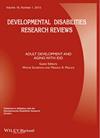Shane L. Rea, Brett H. Graham, Eiko Nakamaru-Ogiso, Adwitiya Kar, Marni J. Falk
{"title":"细菌,酵母,蠕虫和苍蝇:利用简单的模式生物来研究人类线粒体疾病","authors":"Shane L. Rea, Brett H. Graham, Eiko Nakamaru-Ogiso, Adwitiya Kar, Marni J. Falk","doi":"10.1002/ddrr.114","DOIUrl":null,"url":null,"abstract":"<p>The extensive conservation of mitochondrial structure, composition, and function across evolution offers a unique opportunity to expand our understanding of human mitochondrial biology and disease. By investigating the biology of much simpler model organisms, it is often possible to answer questions that are unreachable at the clinical level. Here, we review the relative utility of four different model organisms, namely the bacterium <i>Escherichia coli</i>, the yeast <i>Saccharomyces cerevisiae,</i> the nematode <i>Caenorhabditis elegans</i>, and the fruit fly <i>Drosophila melanogaster</i>, in studying the role of mitochondrial proteins relevant to human disease. <i>E. coli</i> are single cell, prokaryotic bacteria that have proven to be a useful model system in which to investigate mitochondrial respiratory chain protein structure and function. <i>S. cerevisiae</i> is a single-celled eukaryote that can grow equally well by mitochondrial-dependent respiration or by ethanol fermentation, a property that has proven to be a veritable boon for investigating mitochondrial functionality. <i>C. elegans</i> is a multicellular, microscopic worm that is organized into five major tissues and has proven to be a robust model animal for in vitro and in vivo studies of primary respiratory chain dysfunction and its potential therapies in humans. Studied for over a century, <i>D. melanogaster</i> is a classic metazoan model system offering an abundance of genetic tools and reagents that facilitates investigations of mitochondrial biology using both forward and reverse genetics. The respective strengths and limitations of each species relative to mitochondrial studies are explored. In addition, an overview is provided of major discoveries made in mitochondrial biology in each of these four model systems. © 2010 Wiley-Liss, Inc. Dev Disabil Res Rev 2010;16:200–218.</p>","PeriodicalId":55176,"journal":{"name":"Developmental Disabilities Research Reviews","volume":"16 2","pages":"200-218"},"PeriodicalIF":0.0000,"publicationDate":"2010-08-27","publicationTypes":"Journal Article","fieldsOfStudy":null,"isOpenAccess":false,"openAccessPdf":"https://sci-hub-pdf.com/10.1002/ddrr.114","citationCount":"61","resultStr":"{\"title\":\"Bacteria, yeast, worms, and flies: Exploiting simple model organisms to investigate human mitochondrial diseases\",\"authors\":\"Shane L. Rea, Brett H. Graham, Eiko Nakamaru-Ogiso, Adwitiya Kar, Marni J. Falk\",\"doi\":\"10.1002/ddrr.114\",\"DOIUrl\":null,\"url\":null,\"abstract\":\"<p>The extensive conservation of mitochondrial structure, composition, and function across evolution offers a unique opportunity to expand our understanding of human mitochondrial biology and disease. By investigating the biology of much simpler model organisms, it is often possible to answer questions that are unreachable at the clinical level. Here, we review the relative utility of four different model organisms, namely the bacterium <i>Escherichia coli</i>, the yeast <i>Saccharomyces cerevisiae,</i> the nematode <i>Caenorhabditis elegans</i>, and the fruit fly <i>Drosophila melanogaster</i>, in studying the role of mitochondrial proteins relevant to human disease. <i>E. coli</i> are single cell, prokaryotic bacteria that have proven to be a useful model system in which to investigate mitochondrial respiratory chain protein structure and function. <i>S. cerevisiae</i> is a single-celled eukaryote that can grow equally well by mitochondrial-dependent respiration or by ethanol fermentation, a property that has proven to be a veritable boon for investigating mitochondrial functionality. <i>C. elegans</i> is a multicellular, microscopic worm that is organized into five major tissues and has proven to be a robust model animal for in vitro and in vivo studies of primary respiratory chain dysfunction and its potential therapies in humans. Studied for over a century, <i>D. melanogaster</i> is a classic metazoan model system offering an abundance of genetic tools and reagents that facilitates investigations of mitochondrial biology using both forward and reverse genetics. The respective strengths and limitations of each species relative to mitochondrial studies are explored. In addition, an overview is provided of major discoveries made in mitochondrial biology in each of these four model systems. © 2010 Wiley-Liss, Inc. Dev Disabil Res Rev 2010;16:200–218.</p>\",\"PeriodicalId\":55176,\"journal\":{\"name\":\"Developmental Disabilities Research Reviews\",\"volume\":\"16 2\",\"pages\":\"200-218\"},\"PeriodicalIF\":0.0000,\"publicationDate\":\"2010-08-27\",\"publicationTypes\":\"Journal Article\",\"fieldsOfStudy\":null,\"isOpenAccess\":false,\"openAccessPdf\":\"https://sci-hub-pdf.com/10.1002/ddrr.114\",\"citationCount\":\"61\",\"resultStr\":null,\"platform\":\"Semanticscholar\",\"paperid\":null,\"PeriodicalName\":\"Developmental Disabilities Research Reviews\",\"FirstCategoryId\":\"1085\",\"ListUrlMain\":\"https://onlinelibrary.wiley.com/doi/10.1002/ddrr.114\",\"RegionNum\":0,\"RegionCategory\":null,\"ArticlePicture\":[],\"TitleCN\":null,\"AbstractTextCN\":null,\"PMCID\":null,\"EPubDate\":\"\",\"PubModel\":\"\",\"JCR\":\"\",\"JCRName\":\"\",\"Score\":null,\"Total\":0}","platform":"Semanticscholar","paperid":null,"PeriodicalName":"Developmental Disabilities Research Reviews","FirstCategoryId":"1085","ListUrlMain":"https://onlinelibrary.wiley.com/doi/10.1002/ddrr.114","RegionNum":0,"RegionCategory":null,"ArticlePicture":[],"TitleCN":null,"AbstractTextCN":null,"PMCID":null,"EPubDate":"","PubModel":"","JCR":"","JCRName":"","Score":null,"Total":0}
引用次数: 61




 求助内容:
求助内容: 应助结果提醒方式:
应助结果提醒方式:


